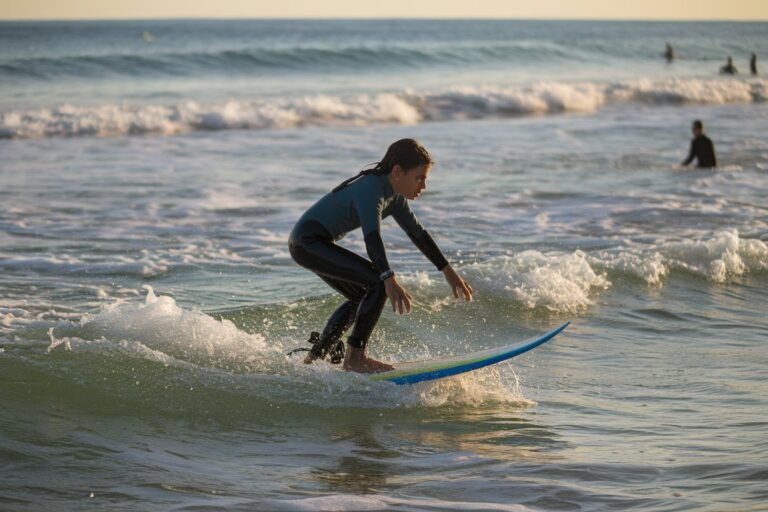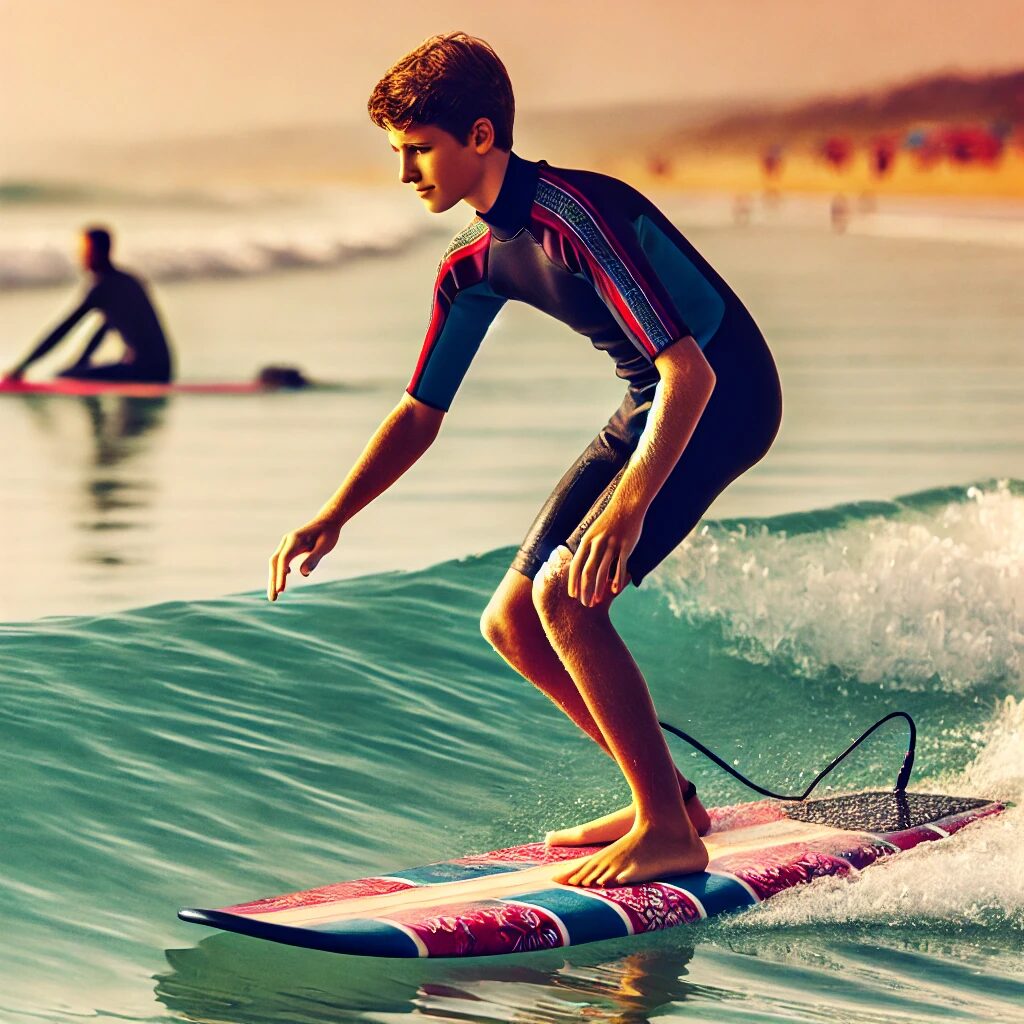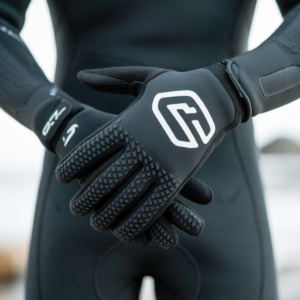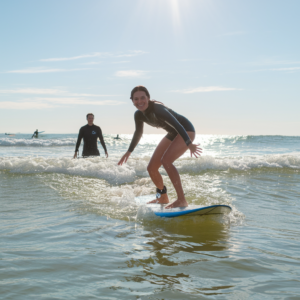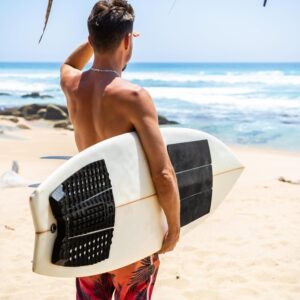So, you’re ready to dive into the exhilarating world of surfing and have your sights set on mastering the shortboard. The shortboard, with its nimble design and responsive feel, is often the choice of advanced surfers who crave agility and high-performance rides. However, transitioning to a shortboard from a longboard or just starting out can be a thrilling yet challenging experience. This article aims to equip you with ten essential tips that will make your journey on the shortboard smoother and more enjoyable.
When To Switch To A Shortboard
Alright, let’s dive into the nitty-gritty of shortboard surfing and set the stage for your smooth transition to this dynamic board. The shortboard, often referred to as a “performance board,” is engineered for speed, agility, and sharp turns. Unlike its longer, more stable cousins, the shortboard demands a blend of technique and finesse to truly master its potential.
Why Shortboards?
Shortboards are beloved for their maneuverability and quick response, making them ideal for shredding the surf and executing high-performance maneuvers. Their reduced length and width mean they sit lower in the water, allowing for tighter turns and faster rides. However, this increased maneuverability comes at the cost of stability, so mastering a shortboard requires a bit more skill and precision.
Key Features of Shortboards:
- Narrow Outline: The streamlined design of shortboards aids in quick directional changes, which is crucial for executing tricks and sharp turns.
- Thin Profile: A thinner profile offers less drag and more speed, which is perfect for cutting through waves and performing aerial maneuvers.
- Deep Swallow Tail: This tail design enhances maneuverability and allows for tighter turns and more aggressive riding styles.
- Performance-Focused Design: Shortboards are often equipped with features like three fins (thruster setup) or more, optimizing them for high-speed and high-performance surfing.
The Learning Curve:
Adapting to a shortboard involves overcoming a steep learning curve. Here are some crucial aspects to consider:
- Balance and Timing: Shortboards require precise balance and timing. The reduced stability means you’ll need to adjust your stance and movements to maintain control.
- Wave Selection: Choosing the right waves is essential. Shortboards excel in steeper, faster waves, so you’ll need to read the surf conditions accurately to make the most of your sessions.
- Paddling Technique: Efficient paddling is vital. Shortboards demand a more aggressive paddling style to generate speed and catch waves effectively.
10 Tips for Shortboard Success:
- Master the Basics: Before hitting the waves, make sure you have a solid understanding of basic surfing techniques and board control.
- Focus on Timing: Perfecting your timing can make all the difference. Practice catching waves and popping up quickly to maintain momentum.
- Enhance Your Balance: Work on exercises that improve your balance and core strength.
- Fine-Tune Your Paddling: Develop a powerful paddling technique to ensure you can catch and ride waves efficiently.
- Learn to Read the Waves: Grasping wave dynamics and identifying the ideal swells for your experience level will elevate your surfing prowess.
- Experiment with Stance: Try different stances to find what feels most natural and allows you to perform maneuvers effectively.
- Practice Maneuvers on Flat Water: Before hitting the surf, practice tricks and turns on flat water to build confidence and technique.
- Use the Right Gear: Ensure your shortboard is suited to your skill level and the conditions you’ll be surfing in.
- Stay Relaxed: Keep a calm and relaxed demeanor while surfing. Tension can disrupt your balance and performance.
- Seek Feedback: Don’t be afraid to ask for feedback from more experienced surfers or instructors to improve your technique.
Where to Buy a Shortboard: A Comprehensive Guide
Factors to Consider When Buying a Shortboard:
- Board Specifications: Shortboards come in various sizes, shapes, and designs. Consider factors like length, width, and fin setup based on your skill level and the type of waves you’ll be surfing.
- Material Quality: The construction material of the shortboard affects its durability and performance. Common materials include fiberglass, epoxy, and carbon fiber.
- Brand Reputation: Established brands often provide higher quality boards and better customer support. Research reviews and brand histories to ensure reliability.
- Price Range: Shortboards vary significantly in price. Determine your budget and balance it with the features and quality you need.
Where to Buy:
Here’s a comparison table of popular options for purchasing a shortboard:
| Retailer | Pros | Cons | Best For |
| Local Surf Shops | Personalized service, ability to see and feel the board in person | Limited selection, often higher prices | Beginners, personalized advice |
| Online Retailers | Wide selection, competitive pricing, customer reviews | Unable to physically inspect the board before purchase | Variety, price-conscious buyers |
| Specialty Websites | Detailed product descriptions, customer reviews, sometimes exclusive brands | Shipping costs, potential for delayed delivery | Brand enthusiasts, specific needs |
| Second-Hand Stores | Lower prices, potential for good deals | Quality and condition may vary, limited return options | Budget buyers, thrifty shoppers |
Local Surf Shops:
Local surf shops offer the advantage of personalized service and expert advice. You can often talk directly with experienced surfers who can help you select the perfect board based on your skill level and surfing style. Additionally, seeing and feeling the board in person can be beneficial to ensure it meets your expectations. However, local surf shops may have a more limited selection and can be pricier compared to online options.
Online Retailers:
Online retailers offer the ease of exploring an extensive range of products right from your couch. Platforms like Amazon, eBay, and specialized surf gear sites feature competitive pricing and a wealth of customer reviews, aiding in well-informed choices. However, remember that you won’t have the chance to physically examine the board before buying, and you’ll need to factor in shipping costs and delivery timelines.
Specialty Websites:
Specialty surf gear websites often feature detailed product descriptions and reviews, as well as exclusive brands and custom options. These sites are ideal for finding specific boards or high-end models that might not be available elsewhere. Be prepared for potential shipping costs and ensure that you are comfortable with the site’s return policy before making a purchase.
Second-Hand Stores:
For budget-conscious buyers, second-hand stores and marketplaces like Craigslist or Facebook Marketplace can offer great deals on used shortboards. While you may find a quality board at a lower price, be cautious about the condition and authenticity of the board. Inspect it thoroughly or seek a seller with a good reputation to avoid potential issues.
Essential Gear for Shortboard Surfing
When gearing up for shortboard surfing, having the right equipment is crucial for both performance and safety. Here’s a rundown of the essential gear you’ll need to complement your shortboard and enhance your surfing experience.
- Wetsuit: A high-quality wetsuit is essential for staying comfortable and protected in the water. For warmer waters, a thinner wetsuit or even a spring suit might suffice, while cooler waters may require a thicker wetsuit. Look for features like thermal lining and flexible neoprene to ensure warmth and ease of movement.
For a full guide on buying wetsuits, read our Wetsuit Buying Guide for Beginner Surfers
- Leash: A surf leash is a must-have for keeping your shortboard attached to you while riding waves. A good leash should be durable, with a strong cord and comfortable ankle strap. It’s important to choose the right length—generally, the leash should be slightly shorter than the length of your board to avoid tangles and drag.
- Wax: Surfboard wax provides traction between your feet and the board, preventing slips and enhancing control. Apply wax to the deck of your shortboard, focusing on areas where you place your feet. Different types of wax are available for varying water temperatures, so choose one that matches the conditions you’ll be surfing in.
- Board Bag: A board bag is essential for protecting your shortboard during transport and storage. Look for a bag with adequate padding and a secure closure.
- Fins: Most shortboards come with a standard fin setup, but you can experiment with different fin configurations to suit your riding style. Tri-fin setups (thrusters) offer stability and control, while quad-fin setups provide more speed and maneuverability. Ensure that your fins are properly installed and in good condition to optimize performance.
- Sunscreen: Use a water-resistant, broad-spectrum sunscreen to shield your skin from harmful UV rays. Choose a sunscreen designed specifically for surfers, which is often more resistant to water and sweat.
- Tail Pad: Used mostly on shortbaord, it will improve your grip on your back foot. This will help greatly in your bottom turns and carving manoevers.
To find out about the importance of tail pads, read this: Do You Need a Surfboard Traction Pad? 10 Pros and Cons
- Surfboard Repair Kit: Accidents happen, and having a surfboard repair kit on hand can save you from costly repairs. Look for a kit that includes epoxy resin, sandpaper, and a mixing stick. This kit will help you fix small dings and cracks, extending the lifespan of your shortboard.
Nobody likes to bread their surfboard! So read our 10 Awesome Tips to Make Your Surfboards Last Longer
FAQs
What is the difference between a shortboard and a longboard?
The main differences between shortboards and longboards lie in their size, shape, and intended use. They are built for quick maneuvers, sharp turns, and fast rides. Longboards, on the other hand, are usually over 9 feet long, with a wider and thicker profile, providing greater stability and ease of paddling. Longboards are ideal for beginners and those who enjoy a more relaxed style of surfing, including classic nose riding.
How do I choose the right shortboard for my skill level?
Selecting the right shortboard depends on your surfing skills and the conditions you’ll be surfing in. Beginners might opt for a board with slightly more volume and width to provide additional stability and easier paddling. Consider factors such as the board’s length, width, thickness, and fin setup based on your skill level and the types of waves you’ll be riding.
What size shortboard should I get?
The size of your shortboard is influenced by your height, weight, and skill level. Generally, shortboards range from 5’6″ to 6’6″ in length. For intermediate surfers, a board around 6’0″ is often a good choice, while more advanced surfers might prefer shorter boards for increased maneuverability. The board’s width and thickness also play a role in its performance; wider and thicker boards offer more stability and floatation, while narrower and thinner boards are more agile but require better balance and technique.
How do I properly care for my shortboard?
To maintain your shortboard in top condition, follow these care tips:
- Rinse after Use: Always rinse your board with fresh water after surfing to remove salt and debris, which can damage the board over time.
- Store Properly: Use a board bag for added protection during transport.
- Inspect Regularly: Check your board for dings, cracks, or other damage.
- Clean Wax: Regularly remove old wax and apply fresh wax to maintain optimal traction.
Can I use a shortboard in small waves?
Shortboards are generally designed for more powerful and steep waves, but you can still use them in smaller waves with the right technique. To make the most of small wave conditions, focus on improving your paddling skills and mastering the art of wave selection. Some surfers use smaller shortboards or modify their fin setups to enhance performance in less powerful waves.
How do I choose the right fins for my shortboard?
Fins play a crucial role in your shortboard’s performance. The most common fin setups for shortboards are the thruster (three fins) and quad (four fins) configurations. The thruster setup offers stability and control, making it a versatile choice for various conditions. The quad setup provides additional speed and maneuverability, ideal for more aggressive surfing. Experiment with different fin sizes and shapes to find the combination that suits your style and the waves you’re surfing.
Can I surf with a shortboard if I’m a beginner?
While shortboards are typically suited for more experienced surfers due to their reduced stability and increased maneuverability, beginners can still use them with the right approach. If you’re a beginner interested in shortboarding, consider starting with a board that offers slightly more volume and stability. Practice basic techniques and gradually build your skills before tackling more challenging maneuvers. Additionally, seeking guidance from experienced surfers or instructors can help accelerate your learning process.
How often should I wax my shortboard?
The frequency of waxing your shortboard depends on how often you surf and the conditions. Generally, it’s a good idea to reapply wax every few sessions or when you notice a loss of traction. If you’re surfing in warmer water, you may need to wax more frequently due to the wax melting off more quickly.
Conclusion
Mastering the shortboard is a rewarding journey that combines skill, technique, and a bit of grit. Whether you’re transitioning from a longboard or diving straight into shortboarding, the key lies in understanding the unique characteristics of the shortboard and adapting your approach accordingly. With its nimble design and performance-focused features, the shortboard opens up a world of dynamic surfing possibilities, from explosive maneuvers to swift, precise turns.
By embracing the tips and insights provided, you’ll be well-equipped to tackle the challenges and fully enjoy the high-octane ride that shortboarding offers. Remember, success on a shortboard doesn’t come overnight. It requires consistent practice, a keen understanding of wave dynamics, and an openness to experimenting with different techniques and setups.
Ultimately, the joy of surfing on a shortboard comes from the thrill of riding the waves with agility and style. Keep honing your skills, stay curious, and let the waves guide you as you progress on your shortboarding adventure. Here’s to countless exhilarating sessions and the endless pursuit of mastering your craft on the waves!
You may have more unanswered questions. So make sure to read this too:
10 Tips to Learn to Surf: Catch Your First Wave on Day 1

